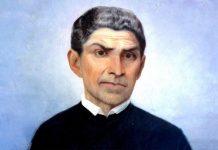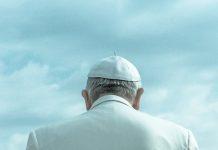After searching in vain for Truth in books and philosophical reasoning, Edith Stein found it in the passionate story of St. Teresa of Avila.
Newsdesk (14/08/2023 19:23, Gaudium Press) Edith Stein, the youngest child of a large Jewish family, was born on October 12th, 1891 in Breslau, Germany. Before she was two years old, she was left fatherless. Little Edith had a strong, lively and independent temperament. In addition, she showed a precocious intelligence that earned her first place in her class throughout her school life. Growing up in a family practising Judaism, she believed in God and addressed her prayers to Him.
Young philosopher in search of theTruth
However, when she reached adolescence, she lost faith in the existence of God, stopped praying and abandoned her studies. She herself later recounted: “With full consciousness and by free decision, I stopped praying. My longing to know the Truth was my only prayer.”
At the age of 14, she decided to resume her high school studies in order to enter university. In 1911 she enrolled in not one, but three disciplines: Philosophy, German and History. At that time it was unusual for a woman to attend university, let alone see a 20 year old pursuing three subjects at the same time!
All Edith’s preferences were for Philosophy. So she moved to Göttingen in 1913 to attend the lectures of Edmund Husserl, considered the most important German philosopher of the time.
This young student seemed to have succumbed completely to the crisis of faith, for she even declared herself an atheist. But, paradoxical as it may seem, she continued to be a tireless pilgrim in search of Truth.
She discovers the Our Father
And Divine Providence, for its part, guided her along mysterious paths ever closer to God, the Absolute Truth. After all, what is God? This ultimate Truth, for which I have guided my life, what does it consist of? What is the meaning of suffering? How can evil be explained? Questions like these were on Edith’s restless mind. Years later she said: “The study of philosophy is a continuous walk on the edge of the abyss”. And she added: “I lived in the naive self-deception that everything in me was right, as is often the case with people without faith, who live in a strained ethical idealism”.
She was in this interior situation when, around 1914, she analyzed the Our Father, not from a religious point of view, but by studying its German etymology. She was very impressed by this prayer and repeated it several times.
At the same time, Edith became acquainted with Adolf Reinach, a Jew and a disciple of Husserl like herself. He too was a fervent and probing seeker of truth. A sincere friendship soon developed between them, in which his wife Anna also participated. The Reinachs were, as it were, on the eve of their conversion to Catholicism, and this would soon have a profound impact on Edith.
Volunteer nurse
In 1914, intellectual activities in Germany were severely disrupted by the outbreak of the First World War. Edith returned to Breslau and enlisted as a volunteer nurse. “Now I have no life of my own – all my strength belongs to this great event. When the war is over, and if I am still alive, I can think about my private affairs.” She took a nursing course and was posted to a military hospital, where, in addition to assisting in the operating theatre, she was in charge of typhoid patients. For her willingness to serve and her dedication to the sick, especially the dying, she was awarded the Red Cross Medal of Honour.
The hospital was closed and she moved to Freiburg, where she studied for a doctorate in philosophy, graduating summa cum laude.
The power of example
Shortly afterwards, Providence placed before her eyes two episodes which, like photographic flashes, illuminated the soul of this young doctor on the road to conversion.
One day, while visiting the Cathedral of Freiburg for purely tourist purposes, she saw a woman enter with her shopping basket and kneel down to say a short prayer. “This was something completely new for me, because I only went into synagogues and Protestant churches for communal religious worship. Here, on the other hand, was someone who came to an empty church in the midst of daily business, as if for a confidential dialogue with God. I have never forgotten that,” she recounted.
The other scene took place in the house of a Catholic farmer where she had stayed during an outing. It made a deep impression on her to see this father of a family saying a morning prayer with his workers before they went to work in the fields.
Conversion at last
Adolf Reinach – Edith’s friend who, like her, was searching for the Truth – died in 1917. Visiting his widow, Anna Reinach, she was surprised to find her full of peace and serenity, with more hope than suffering! She was astonished and at the same time marvelled when Anna told her of their conversion and explained to her the role of the Cross of Christ. “That was my first encounter with the Cross and with the divine power it transmits to those who carry it. It was the moment when my disbelief collapsed,” she later confided.
Around 1918, Edith read the Spiritual Exercises of St. Ignatius of Loyola out of mere academic interest. However, realizing the dense spirituality contained in this work, she undertook the thirty days of meditations, at the end of which she ardently desired to become a Catholic. However, she still had to overcome some inner battles before she reached her definitive conversion.
It came in the summer of 1921. Edith was invited to spend a few weeks at a friend’s country house in Bergzabern, near Spira. One day, when she was alone in the house, she picked up a book at random from the shelf. God had placed in her hands the “Life of St Teresa of Avila“, written by herself. “I began to read it and I was so carried away that I couldn’t stop until I had finished it. When I closed it, I said to myself: ‘This is the Truth!“‘
After searching in vain for the Truth in books and philosophical reasoning, she found it in the passionate story of the great mystic reformer of Carmel, whose example still perfumed souls five centuries after her death.
The next day she bought the Catechism and the Missal and, after studying the contents of these books meticulously, she went for the first time to attend Mass, after which she went to the parish priest and asked for Baptism, which was conferred on her a few months later, on January 1st, 1922.
Apostolic Professor
It was not by chance that the Virgin Mary placed the autobiography of the great St.Teresa in the hands of this chosen soul. Already on the day of her conversion, she felt so called to the contemplative life in the Order of Carmel that she immediately gave up all worldly ambitions and began to live a Carmelite life, as far as her circumstances allowed.
However, her spiritual director, Monsignor Canon Schwind, thought it would be more beneficial for the Church if she employed her talents in the lay apostolate, and invited her to teach German and History at the Institute of Education of St. Mary Magdalene in Spira. She then took in pectore the vows of poverty, obedience and chastity and became a teacher. The Fräulein Doktor (Miss Doctor), as she became known, expressed herself perfectly in six languages. She knew and translated the works of St. Thomas Aquinas with ease.
But more than teaching, she was committed to “helping her students to mold their lives in the spirit of Christ”. And, convinced that “Friar Example is the best preacher”, she carried out her apostolate mainly through an authentic life of piety: she spent hours kneeling before Jesus in the Blessed Sacrament, as if nothing else existed in the world, and she had a deep devotion to the Sacred Heart of Jesus and to the Virgin Mary.
Lecturer and professor
Between 1928 and 1933, on the initiative of a distinguished priest, she travelled around Europe giving lectures on the role of Catholic women in the family and in society, using as her model, Mary, the Virgin Mother.
In 1932 she was appointed to the Chair of Anthropology at the German Institute for Scientific Pedagogy in Münster. At that time, however, the evil winds of Nazism were already blowing, so that shortly afterwards she lost her post because of her Jewish ancestry.
A novice on the road to sainthood
Whether, for her, this arbitrary dismissal was a good or an evil we will not analyze in this article. The concrete fact is that on October 14th, 1933 she entered the Carmel of Cologne. In April 1934 she received the Carmelite habit. Edith Stein was dead to this world, a new spouse of Christ was born, Sister Teresa Benedicta of the Cross.
The novitiate was not easy for her, as she was already 43 years old, and among the nuns her philosophical knowledge was of little value. Moreover, manual labour was an important part of monastic life, and Sister Teresa was very clumsy… The novice mistress never failed to reprimand her at appropriate times, and she never resented it. On the contrary, she knew that these small sacrifices were part of her journey towards sanctification, and she accepted everything with serenity.
The death of her mother in 1936 left her sister Rosa free to receive the baptism she ardently desired and to be received as a Carmelite tertiary in the same monastery in Cologne. The two sisters remained close until their death.
“Jewish Catholics, our worst enemies “
In the second half of the 1930s, the antagonism between the Nazi party and Catholic teaching became more and more pronounced. The government headed by Hitler covertly persecuted the Church. When, in 1937, Pope Pius XI strongly condemned National Socialism in his Encyclical Mit brennender Sorge (With ardent concern), the Nazi animosity grew: the anti-clerical campaign intensified, many bishops were attacked in public, and thousands of the faithful were deported to concentration camps.
In order to prevent the Carmel of Cologne from being jeopardized by her presence, Sister Teresa Benedicta asked to be transferred to a convent outside Germany. Before her request could be granted, delegates of the Nazi government broke into the monastery cloister in search of her. In view of this, she was hastily transferred to the Carmel of Echt in the Netherlands. A year and a half later, her sister Rosa joined her.
In July of 1942, the Dutch Bishops took a formal stand against the Nazis in defence of the unjustly persecuted Jews. The Nazi regime did not wait to retaliate. On August 2nd, Gestapo agents dragged the two sisters out of the convent and deported them to the Westerbork concentration camp in the north of Holland, along with 242 other Catholic Jews. Commissioner General Schmidt publicly recognized that this tyrannical measure had been taken in retaliation for the courageous attitude of the Episcopate: “Since the Catholic clergy will not be dissuaded by any negotiations, we are forced to consider Catholic Jews as our worst enemies and therefore to deport them to the East as soon as possible”.
It looked like an image of the “Pietà” without Christ
One can easily understand the despondency and even despair of these unfortunates, brutally torn from their homes and transported in freight wagons to a concentration camp. Sister Teresa, however, did not allow herself to be overwhelmed. For the few days she remained there, she gallantly kept her Carmelite habit and impressed everyone with her fortitude, serenity and recollection. All the time that the “German Nun”, as she was called, did not spend in prayer, she spent in consoling the afflicted, comforting women and caring for children. She was a “Pietà without Christ” – declared one surviving witness.
Killed out of a hatred for the Catholic faith
On August 7th, government henchmen loaded Sister Teresa Benedicta and her sister Rosa – along with hundreds of other Jews – onto a train bound for the Auschwitz-Birkenau death camp. It was a gruelling journey of almost three days, with no water and no food. On their arrival on the 9th, they were killed in the gas chamber and then their bodies were cremated and their ashes scattered throughout the camps.
Edith Stein died a victim of the odium fidei of the Hitler regime. Fr. Hopster, SVD, states it clearly: “After having heard the explanations of Commissioner Schmidt, it can be stated that the religious arrested on this occasion were killed in witness to the Faith. Their arrest was carried out out of a hatred for the words of our bishops. It was therefore the bishops and the Church who were targeted and affected by the deportation of the religious and Catholics of Jewish origin”.
It was not until 1947 that the Carmelites of Echt and Cologne had certain news of the death of St. Teresa Benedicta of the Cross, and were able to convey this to the other houses of the Order: “Let us no longer seek her on earth, but with God to whom her sacrifice was pleasing, bearing fruit in favour of the people for whom she prayed, suffered and died”.
The completion of the book “The Science of the Cross”
Every free moment of her life as a Carmelite, and even part of the night, Sister Teresa Benedicta devoted to writing the book The Science of the Cross, which had been commissioned to mark the fourth centenary of the birth of St. John of the Cross. However, she was not able to finish it. Or rather, she did finish it, but not in writing: the completion was effected by the giving of her own life. In the same way, the eternal Truth was fully manifested to the world in a Man, Jesus, and not written in a book.
Of her we can say what the Apostle to the Gentiles said of himself: she fought the good fight, she received the crown of glory. She was canonized in 1998 and the following year proclaimed co-patroness of Europe, together with Saint Bridget and Saint Catherine of Siena.
Text taken from Revista Arautos do Evangelho n. 44, August 2005. By Fr. Felipe de Azevedo Ramos, EP.
Compiled by Roberta MacEwan































